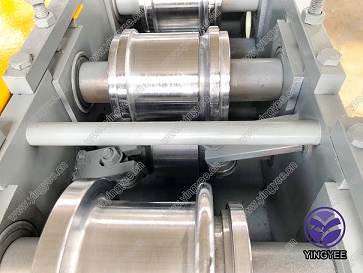
Understanding Gutter Forming An Essential Process in Modern Manufacturing
Gutter forming is a term that may not be instantly recognizable to everyone, but it plays a crucial role in various manufacturing processes, particularly in the construction and infrastructure sectors. This technique, which involves shaping materials into channels or gutters, is essential for managing water runoff and ensuring proper drainage in architectural designs. In this article, we will delve into the concept of gutter forming, its applications, processes involved, and its significance in modern manufacturing.
What is Gutter Forming?
At its core, gutter forming is the process of creating channels or troughs that facilitate the flow of water away from structures. This is particularly important in buildings and roads, where accumulated water can lead to various issues such as erosion, flooding, and structural damage. The gutters are typically made from materials such as metal, plastic, or concrete, which are durable and suitable for long-term use.
The Importance of Gutter Forming
1. Preventing Water Damage One of the primary reasons for gutter forming is to protect buildings and infrastructure from water damage. Poor drainage can lead to leaks, mold growth, and deterioration of foundational materials. Properly formed gutters ensure that water is directed away from sensitive areas, thereby extending the lifespan of structures.
2. Enhancing Aesthetics Beyond functionality, gutters can also contribute to the aesthetic appeal of a building. Well-designed gutter systems can complement the architectural style of a structure, adding to its visual charm while maintaining practicality.
3. Environmental Protection Effective water management through gutter forming can also have environmental benefits. By controlling runoff, gutters help maintain local ecosystems, reducing the risk of flooding in nearby areas and ensuring that water is directed into appropriate drainage systems.
The Gutter Forming Process

The gutter forming process can vary depending on the materials used and the specific requirements of the project. Here are the general steps involved
1. Design The process begins with careful planning and design. Engineers and architects collaborate to determine the optimal shape, size, and placement of gutters based on the building's layout and local weather conditions. Advanced software and modeling tools are often used to ensure precision and efficiency.
2. Material Selection Choosing the right material is crucial for the effectiveness and durability of the gutters. Common materials include galvanized steel, aluminum, vinyl, and reinforced concrete. Each material has its own advantages and is selected based on factors such as cost, weight, resistance to corrosion, and the specific environmental conditions of the site.
3. Shaping Once the materials are selected, the forming process begins. This can involve cutting, bending, and assembling the materials into the desired shapes. For metal gutters, specific machines may be used to ensure high precision in bending and cutting. For concrete gutters, the shaping may involve the use of molds.
4. Installation After forming, the gutters are installed in their designated locations. This requires skilled labor to ensure they are securely affixed and angled correctly for optimal water flow. Proper installation is crucial; poorly installed gutters can lead to inefficiency in water management.
5. Maintenance Finally, regular maintenance is necessary to ensure that gutters continue to function effectively over time. This may involve cleaning debris, repairing leaks, or replacing damaged sections to maintain the integrity of the drainage system.
Conclusion
In conclusion, gutter forming is a vital process in the realm of manufacturing and construction. It not only protects buildings from potential water damage but also enhances the aesthetics of structures and contributes to environmental sustainability. As urban development continues to rise and climate change affects weather patterns, the importance of effective drainage solutions will only grow. Understanding and investing in gutter forming will pave the way for safer, more resilient structures that can withstand the challenges of modern weather and climate conditions. Through innovative design and technology, we can ensure that our built environments remain functional and beautiful for generations to come.